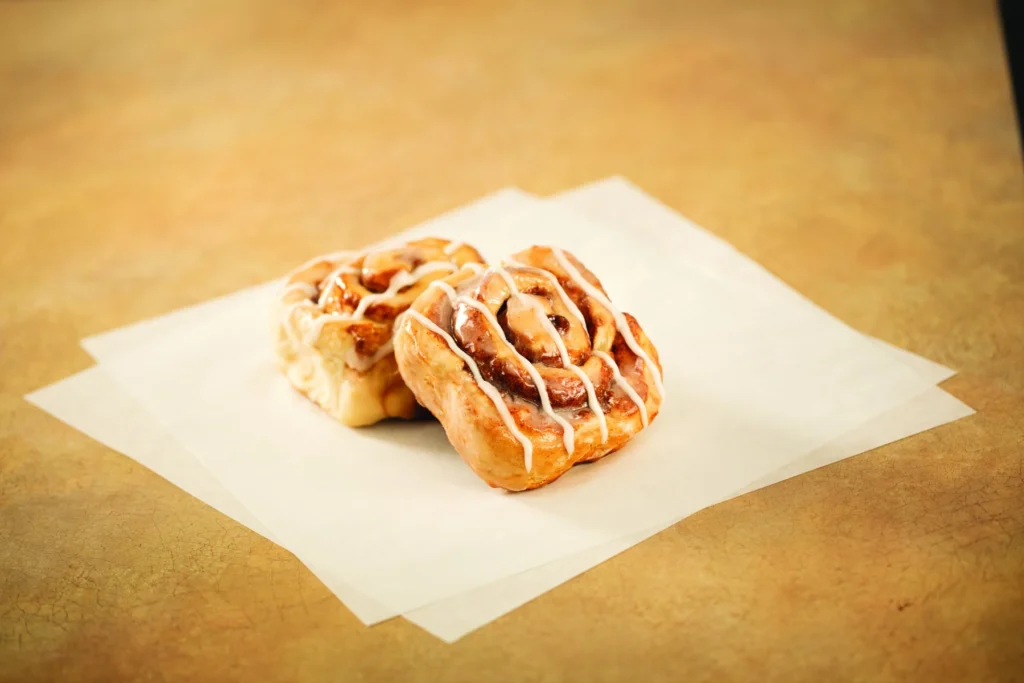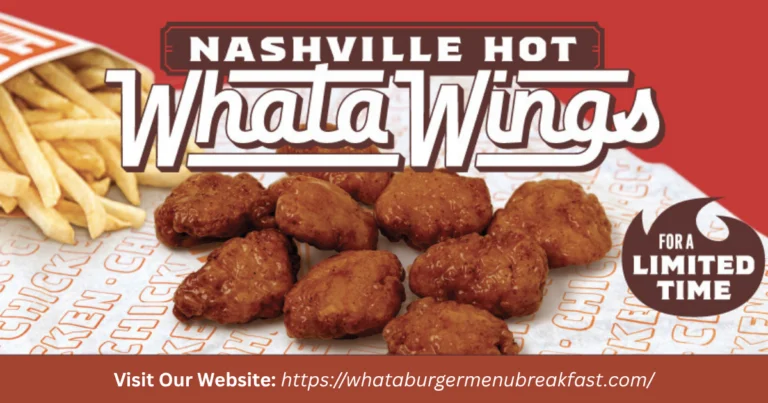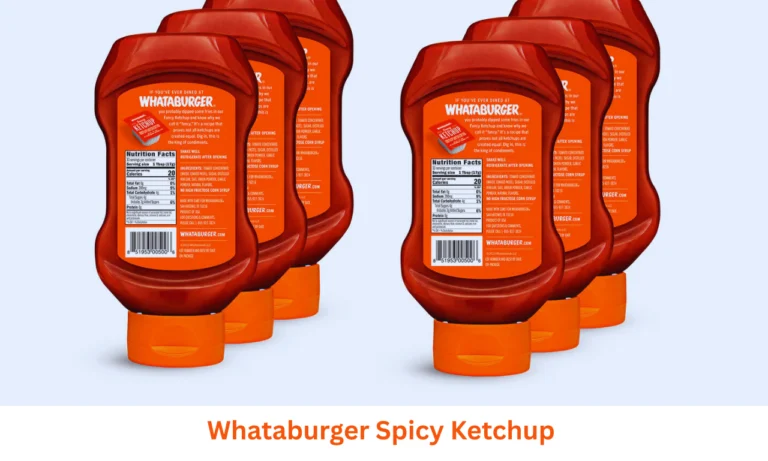Whataburger Cinnamon Roll New Addition: Prices & Ingredients

Cinnamon Roll
Price: $3.19 | 580 cal
The Whataburger cinnamon roll is one of the food items from the snacks and desserts menu. Regular cinnamon roll price at Whataburger is $3.19, having calories of 580 cal. Whataburger also serves cinnamon rolls on a tray for sharing, with each tray containing six cinnamon rolls priced at $11.89 and containing 3490 calories.
The New Cinnamon Roll addition includes increased cinnamon, a delicate and sweet donut glaze, and a drizzle of white icing. Present these warm, with a lightly browned and crispy exterior and a soft, doughy interior.
Patrons utilizing the Whataburger application can receive a complimentary cinnamon roll as an incentive after five visits.
Whataburger cinnamon rolls are made with
Whataburger’s Cinnamon Roll is a delectable pastry crafted from whole wheat and enhanced bleached flour, which comprises a mixture of wheat flour, malted barley flour, and other vital nutrients, including niacin, reduced iron, and folic acid, resulting in a rich and gratifying texture. A saccharine glaze, consisting of sugar, water, maltodextrin, and a hint of artificial flavor, adorns the pastry, achieving an ideal balance of sweetness.
Whataburger Cinnamon Roll Nutrition
| Nutrient | Amount |
| Total Calories | 580 kcal |
| Weight | 175 g |
| Calories from Fat | 160 kcal |
| Total Fat | 17 g |
| Saturated Fat | 11 g |
| Trans Fat | 0 g |
| Cholesterol | 15 mg |
| Sodium | 1290 mg |
| Dietary Fiber | 7 g |
| Protein | 10 g |
| Sugars | 38 g |
| Total Carbs | 94 g |
Ingredients
Whataburger cinnamon rolls include different ingredients that fall into the dough, smear, and icing categories.
Wheat flour, reduced iron, folic acid, malted barley flour, riboflavin, niacin, and thiamin mononitrate are among the dough categories.
Dough conditioners include guar gum, ascorbic acid, enzymes, sunflower oil, sodium, salt, emulsifiers, soybean oil, and preservatives.
Other ingredients include margarine, water, sugar, nonfat dry milk, and active dry yeast.
Icing categories include the following ingredients: palm oil, artificial vanilla flavor, sugar, water, icing stabilizer, and cornstarch.
The smear category also includes water, sugar, margarine, soybean oil, artificial vanilla flavor, powdered sugar, and enriched bleached wheat flour.
Cinnamon Rolls Versus Cinnamon Buns
People in the West are likely to find the same thing when they go to the store looking for “hot dog buns” or “hot dog rolls.”
However, if you visit a restaurant, they may display both cinnamon buns and cinnamon rolls for your viewing pleasure. At times, they may combine the two terms. They occasionally discuss various baked goods, each made with a unique blend of materials.
First, let’s talk about what makes these two floppy favorites different.
What Is a Cinnamon Roll?
Cinnamon rolls originated in Denmark and Sweden but gained widespread popularity globally. Their predominant flavors are butter and cinnamon. Notably, bakers adorn the finished product with icing or frosting, which may consist of sugar, cream cheese, or cream-based ingredients.
Typically, a cinnamon roll is soft and fluffy, characterized by a unique “rolled” spiral structure. Some bakers opt to bake their rolls, while others choose to fry them. The topping, not the filling, contributes most of the sweetness. Traditionally, cinnamon rolls do not include nuts or other textured fillings or toppings.
What Is a Cinnamon Bun?
Cinnamon buns originated in Germany and likely arrived here in the 17th century. The bun may represent a regional variety of the roll due to Germany’s proximity to Sweden and Denmark. Buns may have evolved and transformed upon the arrival of immigrants in America, sharing a designation with their northern counterparts.
Cinnamon buns typically possess a higher sweetness due to the inclusion of cinnamon and brown sugar in the filling. Additionally, bakers typically bake in a layer of sugar, forming a hardened sugary shell. In contrast to cinnamon rolls, bakers do not apply icing or frosting post-baking.
Cinnamon buns possess a uniform spiral configuration. Occasionally, they become more slender and fragile.
The primary distinction between cinnamon rolls and cinnamon buns is the presence of nuts. Cinnamon buns frequently contain pecans, walnuts, or raisins in the filling. Occasionally, people sprinkle nuts on top after baking.
How are cinnamon rolls and buns similar?
Sure, cinnamon rolls and cinnamon buns are different, but it’s clear that they share a lot. They are both spiral-shaped and have a buttery dough base that tastes like cinnamon. Given that both buns and rolls originate from Europe, it’s plausible that they represent distinct variations of the same pastry, evolving as they traveled across the ocean and across the globe.





